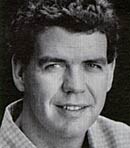The Documentary
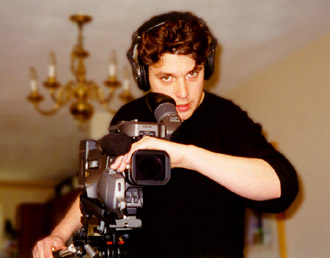
|
| "The Nazi Drawings" is filmmaker Lane Wyrick's first major documentary production. Wyrick, a 1990 Graduate of The University of Iowa in Film & Broadcasting, produced the film through Xap Interactive, a company he founded in 1995 to create professional quality video and multimedia productions. He served as director, videographer, and editor on "The Nazi Drawings" Documentary. |
|
| The Nazi Drawings Documentary Project began in the fall of 1997, with grants from the University of Iowa Foundation, Richard & Jeanne S. Levitt of Minneapolis, Marvin & Rose Lee Pomerantz of Des Moines, and Webster & Gloria Gelman of Iowa City. |
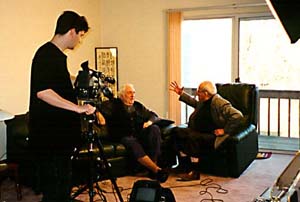 |
Shooting commenced in January of 1998. Wyrick, Mauricio and Phillip Lasansky flew to Providence Rhode Island to tape an interview with Edwin Honig, author of the text to the original Nazi Drawings "Catalog". |
|
From these free-form discussions between Honig and Lasansky, much of the content of the documentary was derived. Upon returning to Iowa City, three more interviews of Lasansky were taped, two at Lasansky's studio in Iowa City and one at the University of Iowa Museum of Art in front of The Nazi Drawings. During the editing process, Wyrick taped another interview with Lasansky to fill important concepts that needed to be expanded upon. He then drove to Des Moines to interview Richard S. Levitt to get his perspective on The Nazi Drawings (the Richard Levitt Foundation is the current owner of The Nazi Drawings). |
| Wyrick began editing all the digital footage on his computer system, and began the storytelling process through editing. |
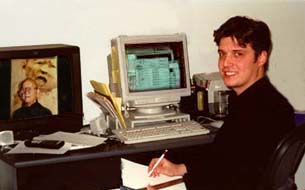
|
|
In the beginning of 1999, Wyrick had assembled a very rough cut, using only the best segments from the interview footage, and low resolution still images of The Nazi Drawings. After viewing the footage with his wife Angela, it was determined that narration was needed to provide the necessary "glue" to blend the scenes together and to provide a broader context for the documentary. The Drawings were scanned in at high resolution from The Nazi Drawings Catalog, as were many historical photographs of Lasansky. Wyrick used Adobe After Effects to allow him to create very smooth and precise motion, zooming into details of the Drawings and photographs, and fine tuning the edits to match with the music and narration. |
The Narration Script
Throughout the production, Wyrick closely collaborated with Content Advisor Phillip Lasansky, who provided historical accuracy and insight concerning The Nazi Drawings. Together they crafted the narration, sending revisions back and forth by email, until the script was completed.
|
| Meanwhile, University of Iowa School of New Music Professor David K. Gompper was approached to create an original music soundtrack for the documentary. | 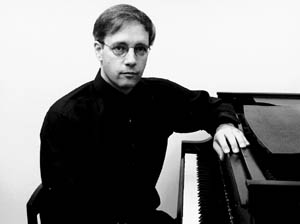 |
Gompper and Wyrick viewed The Nazi Drawings in person and discussed the musical styles and concepts that would be appropriate for the documentary. Wyrick provided Gompper with a rough edit of the video with timecode so he could compose the individual segments accurately.
Gompper's powerful original music score was recorded with live musicians at Clapp Recital Hall in Iowa City, giving extra depth and emotion to the documentary. Wyrick then fine-tuned the edit by matching the movement of the Drawings and photographs to Gompper's soundtrack.
Completion
A private screening was scheduled for October 7, 1999 and the final push to completion was made. Editing continued up to the day of the show. This Sneak Preview of "The Nazi Drawings" Documentary was held that night for the investors, family members, and several University of Iowa Foundation Board members, UI Faculty and Staff. The screening took place in a brand new, circular conference room with three video projectors.
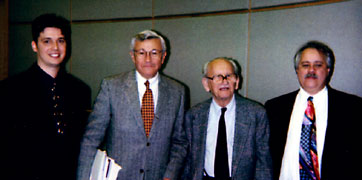
|
|
|
After a few minor changes to the project following the screening, the final edit of The Nazi Drawings Documentary was completed on November 7, 1999.
Public Premiere
From there, discussions took place on how best to get the documentary out to the public, and planning began to have a large event to honor Mauricio Lasansky which would serve as the Public Premiere of the documentary.
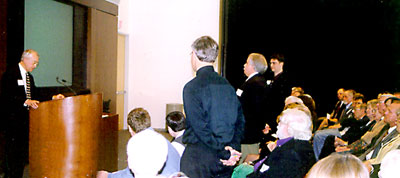
|
On Sunday, April 9th, 2000 at 1 p.m., The Nazi Drawings Documentary premiered to a packed house at the Levitt Center for University Advancement in Iowa City. The documentary was played on two main halls with projection screens, and in a third conference room for overflow seating. Crowd estimates were around 350.
See how viewers at the Premiere reacted to the Documentary
The documentary had a Los Angeles Premiere event that was very successful and launched a theatrical run to qualify it for Academy Award consideration in the short documentary category.
It has gone on to win numerous awards, including the Mid-America Emmy Award for Best Documetary, and it was broadcast on several PBS stations across the country during Holocaust Remembrance Month.
The DVD version was then created, incorporating many extra features including an interactive exploration of the Drawings and additional interview footage with Lasansky.




